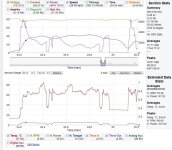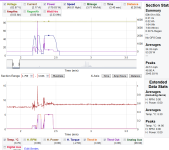I was playing around with the motor simulator on ebike.ca and it seems if I am going down a 10% grade my speed maxes out at 25 MPH and I feed 1KW back into the battery.
https://www.ebikes.ca/tools/simulat...k=load&batt=B36LiGox8&batt_b=B36LiGox8&hp_b=0
Does this mean if I wanted to go faster, I would get increasingly more braking from regen, making it hard to go much faster?
https://www.ebikes.ca/tools/simulat...k=load&batt=B36LiGox8&batt_b=B36LiGox8&hp_b=0
Does this mean if I wanted to go faster, I would get increasingly more braking from regen, making it hard to go much faster?



